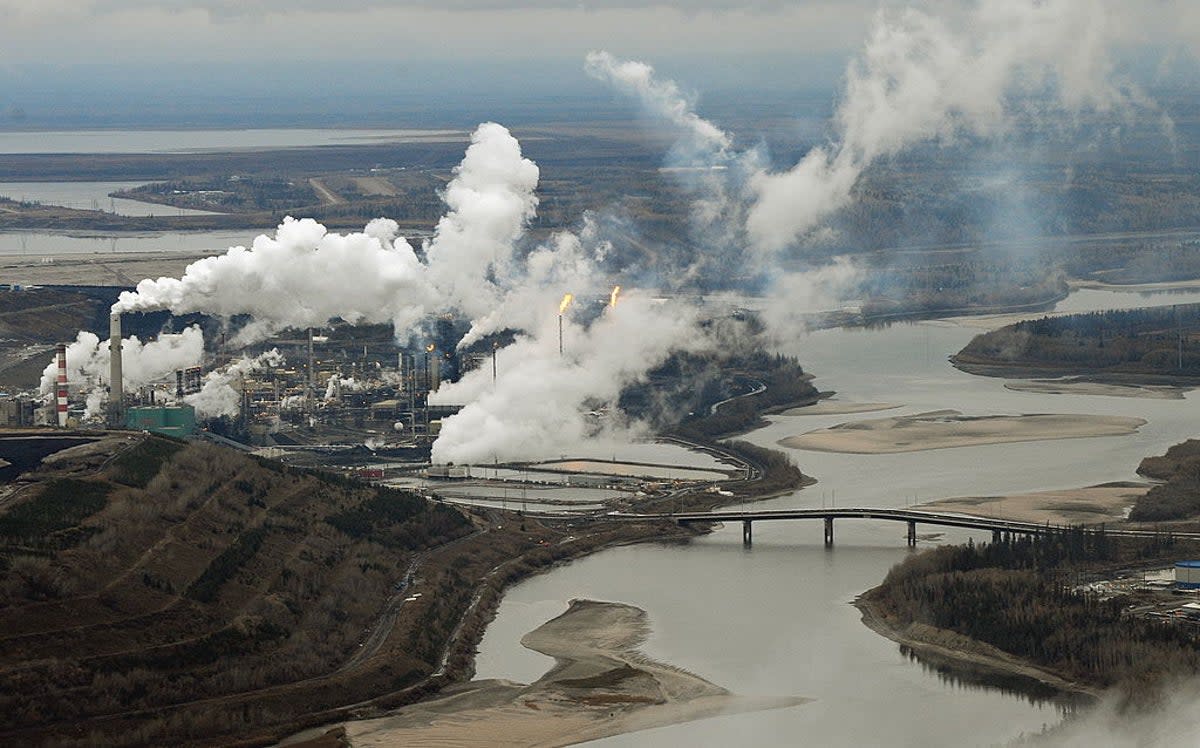Canada is underestimating toxic oil sands emissions by up to 6000%

Over four months in 2018, a group of scientists took more than a dozen flights over the Athabasca oil sands in Canada, one of the largest deposits of bitumen in the world.
In a plane strapped with carbon dioxide analyzers, the scientists flew close to mining facilities which extract and convert the sludgy mix of heavy crude, water, sand, and clay from beneath Alberta’s boreal forest into a usable synthetic oil. The aim was to assess what impact the industry’s emissions were having downwind on air and water quality, the land and wildlife.
The findings, published on Thursday, surprised both the research team and environmental campaigners alike. The total carbon emissions from mining companies in the area exceeded what the industry was self-reporting by 1900 per cent to over 6300 per cent.
The emissions measured represented approximately 1 per cent of extracted petroleum, and were equivalent to those from all other sources across Canada combined, the scientists reported.
They also noted that the total oil sands carbon emissions were larger than those from all human-made sources, from chemical products to cars, in megacities like Los Angeles.
Local Indigenous communities and environmental groups have long warned that oil sands operations, which are costly and use vast amounts of water, take a heavy toll on the surrounding environment, human health and the climate crisis at large.
“I suppose ‘Holy s***’ isn’t printable,” Keith Stewart, from Greenpeace Canada, emailed The Independent.
“In quantifying the astonishing and largely unreported levels of health-damaging air pollution coming out of oil sands operations, these scientists have validated what downwind Indigenous communities have been saying for decades. This is making people sick, so our governments can and should require these companies to use some of their record-breaking profits to clean up the mess they’ve made.”
At the three highest-emitting facilities discovered by the study - Syncrude Mildred Lake, Suncor, and Canadian Natural Resources - emission rates were 20 to 64 times greater than those in the Alberta Emissions Inventory Report and Canada’s National Pollutant Release Inventory, tallies that industrial facilities are required to provide.
According to Alberta’s provincial government, there is currently no limit on oil sands emissions, either by facility or industry-wide.
The Independent has contacted these companies and Steven Guilbeault, Canada’s Minister of Environment and Climate Change (EEEC), for comment.
The new study, published in the American Association for the Advancement of Science journal, is part of a larger project assessing oil sands pollution being carried out by the governments of Canada and Alberta along with Indigenous communities and industry, and involving scientists from Yale and Peking universities.
The traditional way of measuring and monitoring emissions from industrial operations like the oil sands is to focus on limited subsets of the gases released into the atmosphere, and assume that this accounts for most emissions.
But the aircraft study, accompanied by lab testing, showed that there were many gases unaccounted for in the atmosphere.
The researchers examined emissions from both surface mining operations as well as extraction taking place from deeper deposits of bitumen, the latter of which has been less well-researched despite increasing production. The study also noted the importance of post-extraction waste management to overall carbon emissions.
Drew Gentner, associate professor of chemical and environmental engineering at Yale, and Dr John Liggio, an EEEC research scientist, said in an email to The Independent that a smaller, aircraft-led study in 2016 found that downwind pollution of particulate matter (PM2.5) from the oil sands facilities was equivalent to a major city like Toronto.
The more extensive 2018 study revealed not only the magnitude of the underlying emissions causing air quality impacts but how the emissions reporting and routine monitoring approaches missed these pollutants, they wrote.
“Still, the magnitude of emissions observed from oil sands operations was surprising, compared both to their reported emissions and to the total from all anthropogenic sources across Canada,” they wrote.
“These emission underestimates were not just observed at the more well-known surface mining operations, but also from in situ extraction facilities that represent over half of production.”
They said the findings highlighted the importance of comprehensive measurements that look for “missing emissions” as well considering pollutants throughout the life-cycle of the industrial operations.

